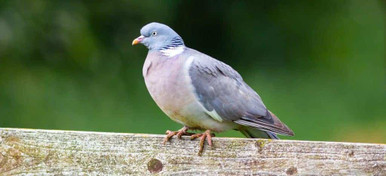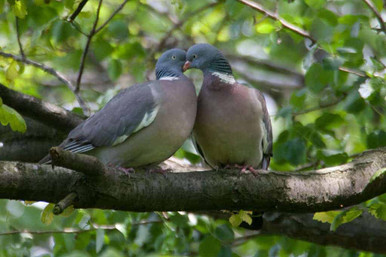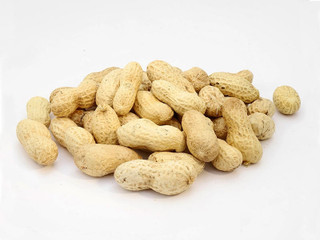The Kennedy Wild Bird Food Guide to the Wood Pigeon
The common wood pigeon (less commonly known by its scientific name Columba palumbus) is one of the most common types of pigeons in the UK, belonging to the pigeon and dove family. Discover some of the most interesting facts about the wood pigeon in our guide, including its lifespan and what exactly they like to eat.What does a wood pigeon look like?
The woodpigeon is a grey bird with a pale pink chest and a distinctive white neck patch. This white patch is usually visible on from about 6 months of age. A wood pigeon might also have white under-wing patches that are easily visible in flight.
Wood pigeon vs city pigeon: what’s the difference?
A wood pigeon is typically larger than a city pigeon. You can also tell a wood pigeon apart from a city pigeon by the white patch on its neck. Wood pigeons are typically a lot warier than the city pigeon, but they can become friendly if you feed them regularly.What does a wood pigeon sound like?
The wood pigeon’s call is a distinctive ‘coo-COO-coo-coo-coo’ sound that you’ve definitely heard before. Just have a listen to the clip below. Click here to listenWhat do wood pigeons eat?
Unlike the city pigeon, a wood pigeon’s diet consists mostly of vegetables and leaves. They particularly love crops like cabbages, peas, sprouts and grains. They also like to eat shoots, seeds and nuts. If you’re looking to attract wood pigeons to your garden, grab some of their favourite seeds or nuts like our sunflower hearts for birds. Not only will the wood pigeons love them, but they'll be adored by some of your favourite other wild birds too, including finches, robins and tits.What do baby wood pigeons eat?
Baby wood pigeons feed by putting their beaks inside their parent's beaks, and the parent then regurgitates it from their crop. That’s why it’s so important for wood pigeons to eat a healthy diet of vegetables, nuts and seeds that can then be passed on to their young.Nesting, behaviour and interesting facts
The wood pigeon’s lifespan is on average 3-5 years, but they are known to live up to 15 years on occasion. Their nests are often vulnerable to predators like crows due to their rural location, however, young wood pigeons can survive on their own from as little as 20 days after hatching. Most young will fledge around 33 days.Do wood pigeons mate for life?
Just like Swans, all pigeons are known to mate for life. You might have seen the same pair of wood pigeons flying around your garden or local park, and that’s because it’s common for them to stick together in a rural area they know well. Wood pigeons breed and nest in woods, parks and gardens all across the UK - and you’ll be able to spot them all year round. Even if you live in a city, you might find a wood pigeon in your local greenery area. If you do spot a wood pigeon in your garden, don’t forget to log the sighting on our Birdpotter map!










